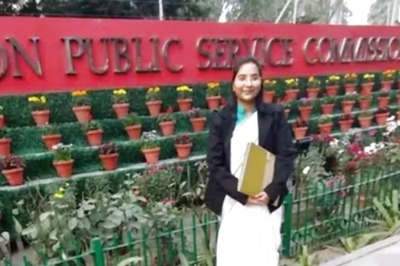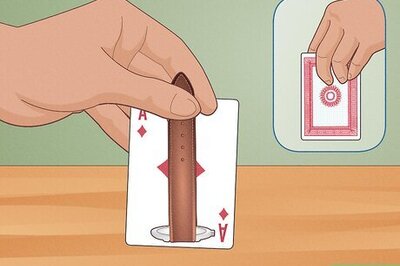
views
The Indo-US civilian nuclear deal has been in the making for the past few years and has always been a point of contention between the two countries. The deal, which will finally come through during George Bush’s India visit beginning March 1, has seen many roadblocks and a lot of strategic lobbying.
Here’s a lowdown on what the deal is and how India will benefit from it:
Under the nuclear deal, the US will help India import uranium for non-military use for generating nuclear power.
In exchange, India must give assurances that the uranium will not be diverted for bombs by placing all non-military nuclear facilities under International Atomic Energy Agency (IAEA) safeguards.
This means, these facilities will be watched by officials of the IAEA, the United Nations' nuclear watchdog.
However, India's military facilities will not be under safeguards, they can continue making nuclear bombs.
The first step:
According to the US-India Joint statement released after the meeting between the US President George Bush and Prime Minister Manmohan Singh in Washington on July 18, 2005, Bush assured Singh that he 'will work to achieve full civil nuclear energy cooperation with India as it realises its goals of promoting nuclear power and achieving energy security.'
The declaration said that the Bush will also request the Congress to adjust US laws and policies.
Bush also said in the declaration that the United States would work with friends and allies to adjust international regimes to enable full civil nuclear energy cooperation and trade with India, including but not limited to expeditious considerations of fuel supplies for safeguarded nuclear reactors at Tarapur.
The statement pointed out that Bush had welcomed the Singh’s assurance and that the two leaders agreed to establish a working group to undertake on a phased basis in the months ahead the necessary actions mentioned to fulfill these commitments.
The President and Prime Minister also agreed that they would review this progress when the President visits India in 2006, it added.
This US consent to transfer civilian nuclear technology to assist India with its energy requirements was the most tangible outcome of the summit.
The July summit was meant to push forward the all-important deal and facilitate resumption of civilian nuclear trade ties between India and the US.
PAGE_BREAK
Say yes, say no
However, there were certain issues that remained debatable and the deal hit a roadblock when the Bush administration asked India to classify most of its nuclear reactors as civilian in order to convince the US Congress that New Delhi has no ulterior motives in seeking nuclear cooperation.
The US said that India's proposals for differentiating between civilian and military nuclear facilities were yet to meet the test of credibility.
India has over 80 nuclear facilities and installations, including 22 nuclear reactors and differences persisted over how many of these should be classified as civilian facilities open to IAEA inspections.
Representatives of both countries met again in January 2005 in New Delhi to take the process forward.
India and the US have been bargaining hard over the conditions on the facilities to be included in the civilian and military lists.
While the US is pressing India to expand the list of facilities to be brought under IAEA safeguards, India is not keen on budging from its stand.
India says safeguards should be "voluntary," as applicable to the nuclear weapons-states (NWSs) recognized under the Nuclear Nonproliferation Treaty (NPT).
However, the US says that until India's nuclear facilities are separated under civilian and military catgories, the former cannot be placed under the safeguards of the International Atomic Energy Agency (IAEA), the United Nations nuclear watchdog.
The deck for the deal has finally been cleared and both nations will ink the pact during Bush’s visit.















Comments
0 comment